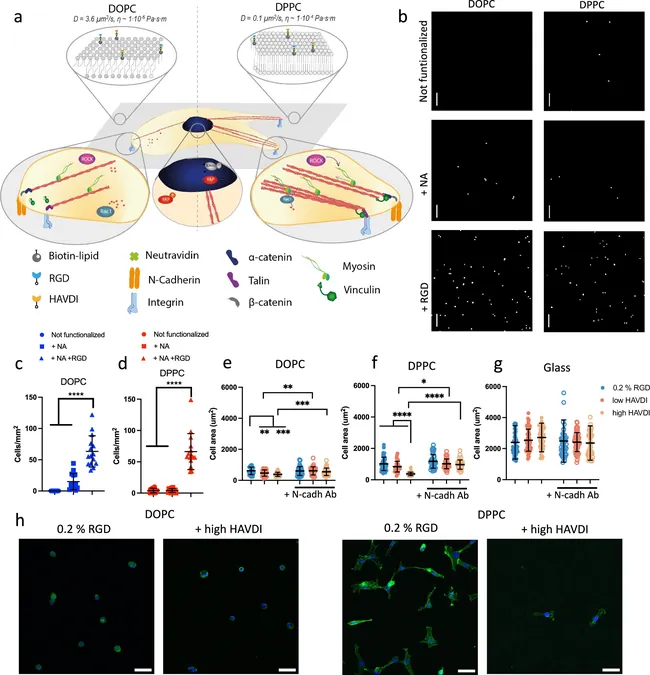
Unlocking the Secrets of Viscosity: A Breakthrough in Stem Cell Differentiation and Biomaterial Design!
2024-11-18
Author: Rajesh
Groundbreaking Research by IBEC
In a groundbreaking study led by the Institute for Bioengineering of Catalonia (IBEC), researchers have unveiled crucial insights into how mesenchymal stem cells (MSCs) respond to the viscosity of their environment—a critical factor influencing their differentiation process. This research, spearheaded by ICREA Research Professor Manuel Salmeron, also a professor of Biomedical Engineering at the University of Glasgow, opens new avenues for developing biomaterials in regenerative medicine.
Shift in Understanding Material Properties
Published in *Nature Communications*, this research shifts focus from the traditional understanding of material stiffness to the often-overlooked attribute of viscosity, which is essential for cell behavior and fate. MSCs, with their remarkable ability to transform into various cell types—such as bone, cartilage, or muscle—are influenced significantly by the physical characteristics of their surroundings.
Insight from Professor Salmeron
"Typically, we conceptualize tissues like springs, requiring constant force to maintain deformation. However, tissues are viscoelastic; applying a force causes them to deform, but their internal structure readjusts without needing continuous pressure," explained Salmeron, principal investigator of IBEC's Microenvironments for Medicine group.
Innovative Experimental Model
The researchers devised a sophisticated experimental model using lipid membranes that replicated the viscosity of natural tissues, allowing for an in-depth investigation of how the interaction between adhesion proteins (integrins) and connecting proteins (cadherins) affects MSC behavior. Their findings indicate that when MSCs interact with other cells, their adhesion to the substrate weakens, influencing their differentiation towards softer tissues like cartilage. This suggests that both the viscosity of the extracellular environment and cell-cell interactions are pivotal in how stem cells interpret their environment, which could transform biomaterial design.
Collaboration for Enhanced Model
Collaborating with Pere Roca-Cusachs, a professor at the University of Barcelona and leader of the Cellular and Molecular Mechanobiology group at IBEC, the team enhanced their experimental model to incorporate both viscosity and cell-cell interactions through cadherins. This innovative approach simulates the behaviors of viscoelastic tissues found within the human body more faithfully.
Impact on Personalized Regenerative Medicine
Eva Barcelona's Ph.D. thesis encapsulates this work and represents a significant leap towards developing engineered materials that can precisely drive tissue regeneration. This lays the groundwork for advancing personalized regenerative medicine—offering hope for future treatments that are tailored to individual patient needs.
Future Directions in Biomaterials
As we stand on the brink of a new era in biomaterials and regenerative therapies, the implications of this research could be monumental. Could we soon tailor biomaterials that not only mimic but also enhance natural tissue healing processes? The potential applications in medicine are limitless! Stay tuned for more updates on this tantalizing area of study!


 Brasil (PT)
Brasil (PT)
 Canada (EN)
Canada (EN)
 Chile (ES)
Chile (ES)
 España (ES)
España (ES)
 France (FR)
France (FR)
 Hong Kong (EN)
Hong Kong (EN)
 Italia (IT)
Italia (IT)
 日本 (JA)
日本 (JA)
 Magyarország (HU)
Magyarország (HU)
 Norge (NO)
Norge (NO)
 Polska (PL)
Polska (PL)
 Schweiz (DE)
Schweiz (DE)
 Singapore (EN)
Singapore (EN)
 Sverige (SV)
Sverige (SV)
 Suomi (FI)
Suomi (FI)
 Türkiye (TR)
Türkiye (TR)